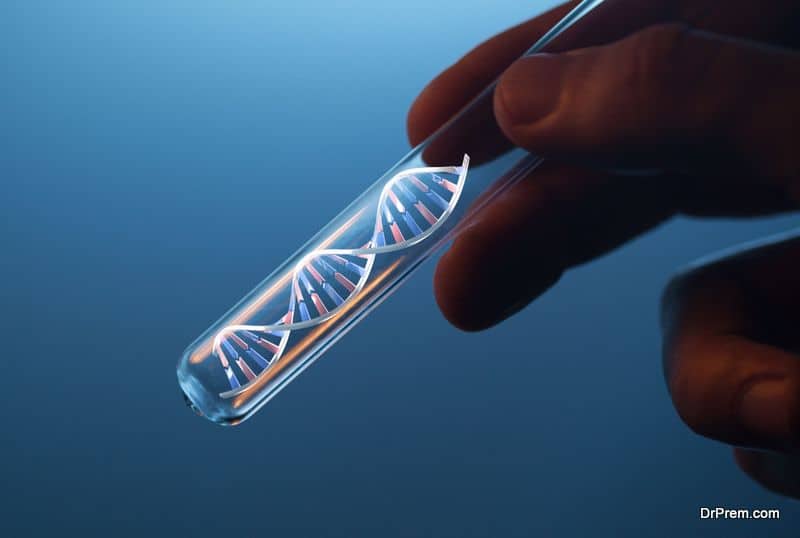Many times it so happens that a physical disability or mental abnormality results due to the misplacement or misalignment of a single gene. A sole and seemingly harmless gene mutation, which can be addressed by CRISPR/Cas9 gene editing, is enough to change the physical appearance of an individual drastically.
Humans, animals, and plants all have their own unique genetic makeup, which is influenced by a number of factors. But, due to certain unavoidable genetic changes, they then spend their lives like an abnormal individual.
With the advancements in technology, these undesired mutations can be rectified. Read on to know more about what is CRISPR/Cas9, and how it is made possible. Given in the paragraphs below is CRISPR/Cas9 explained.
What is CRISPS/Cas9 Gene Editing?
So, what is CRISPR/Cas9? CRISPR stands for Clustered Regularly Interspaced Short Palindromic Repeats, and Cas9 is the CRISPR protein number 9.
Together, CRISPR/Cas9 is nothing but a tool that, which in layman’s language, is employed to cut away defected genes responsible for disability and to replace them with the desired gene sequences. This is called CRISPR gene editing.
To answer what is CRISPR/Cas9, CRISPR/Cas9 gene editing is getting popular by the day, and many researchers are taking it up as it is an interesting and practical topic to study.
Will it help fight disease or prevent them?
Many people wonder what is CRISPR/Cas9 and how can it be made efficient. CRISPR was first found in bacteria, which use it to render viruses harmless. This sequence is present in bacteria, which, in the face of an infection, they use to cut away genes of viruses that can prove to be fatal to them.
This exact property can be used to make use of CRISPR as a tool to chip away genome sequences that are responsible for ALS (Amyotrophic Lateral Sclerosis) or AIDS.
Also, scientists have CRISPR/Cas9 explained as molecular scissors which can be used to chip away genome sequence of disease-causing agents like malaria, in case of Anopheles mosquitoes. This way CRISPR/Cas9 can very well be used to treat diseases as well as prevent them to a large extent.
How efficient is CRISPR/Cas 9 Gene editing?
As per the studies conducted so far on microorganisms, plants, small animals, and humans, it can be rightly said that CRISPR/Cas9 gene mutation works quite efficiently.
This is how one can get CRISPR/Cas9 explained: It is extremely practical in getting rid of the faulty genes and replacing them with the useful and effective ones. CRISPR/Cas9 will soon make its way in medical treatments in the near future.
What are its applications?
Here is CRISPR/Cas9 explained: Since the initial discovery of CRISPR/Cas 9 back in 2012, various studies have been carried out on plenty of living organisms including animals and humans. Yeast, Drosophila, and C. Elegans are only some of the microorganisms subject to CRISPR/Cas 9 gene editing.
Plants, mice, rats, and pigs also showed an incredible response to this gene mutation. This proves that CRISPS/Cas9 works very effectively as a genome-targeting tool and is quite practically applicable too.
What are the challenges associated with CRISPR/Cas9?
Although CRISPR/Cas9 has widely solved many issues regarding genetic defects, it still needs to be worked on quite a lot before it makes its way to the field of medicine and treatment.
The big question here is: What happens when CRISPR/Cas9 is explained and edits a gene sequence and the future generations continue to carry it forward?
In a recent study, a group of mice was subject to this treatment where they had their blinding genes altered with the help of CRISPR/Cas9. But, the surprising part was the damage done in the wake of this process.
As much as 100 insertions or deletions were found to have come up post this process. In addition to that, 1500 single nucleotide mutations were also brought to light.
The most shocking part here is that these DNA mutations were not even remotely predicted, neither by the researchers nor by the most reliable computer algorithms.
Conclusion:
One needs to understand that in spite of the above-mentioned advantages, CRISPR/Cas9 gene editing is capable of doing a lot more. Various researches are going on, which are sure to develop into full-fledged case studies, that are expected to bring about a lot more advancements in this field.
Remember that there is practically no limit to what science can do. With CRISPR/Cas9 gene editing, one can expect plenty more miracles in molecular biology. There cannot be a better way to nip life-threatening disease in the bud than resorting to CRISPR/Cas9 gene editing in the present and future.










